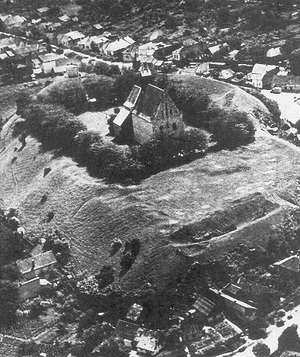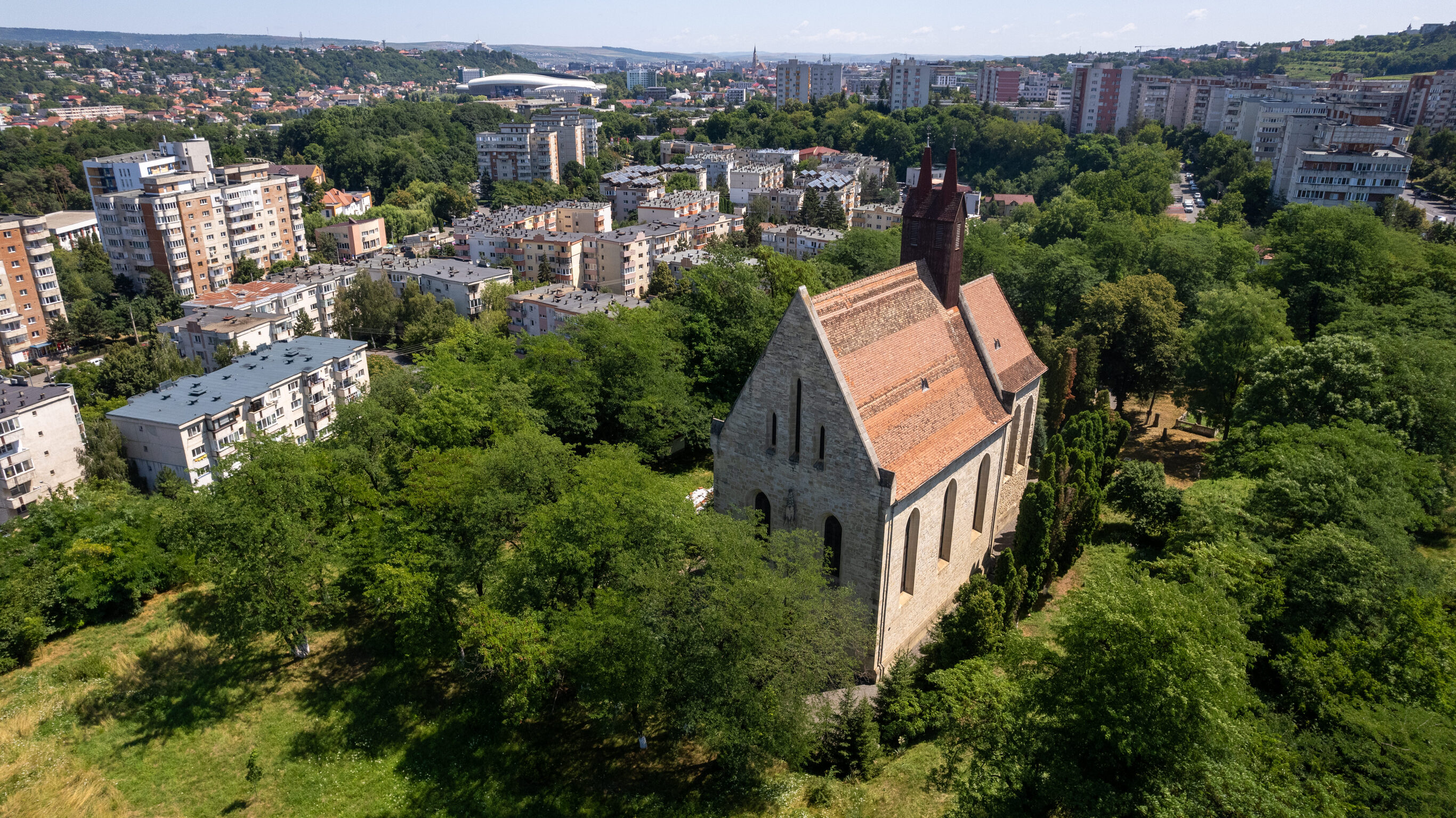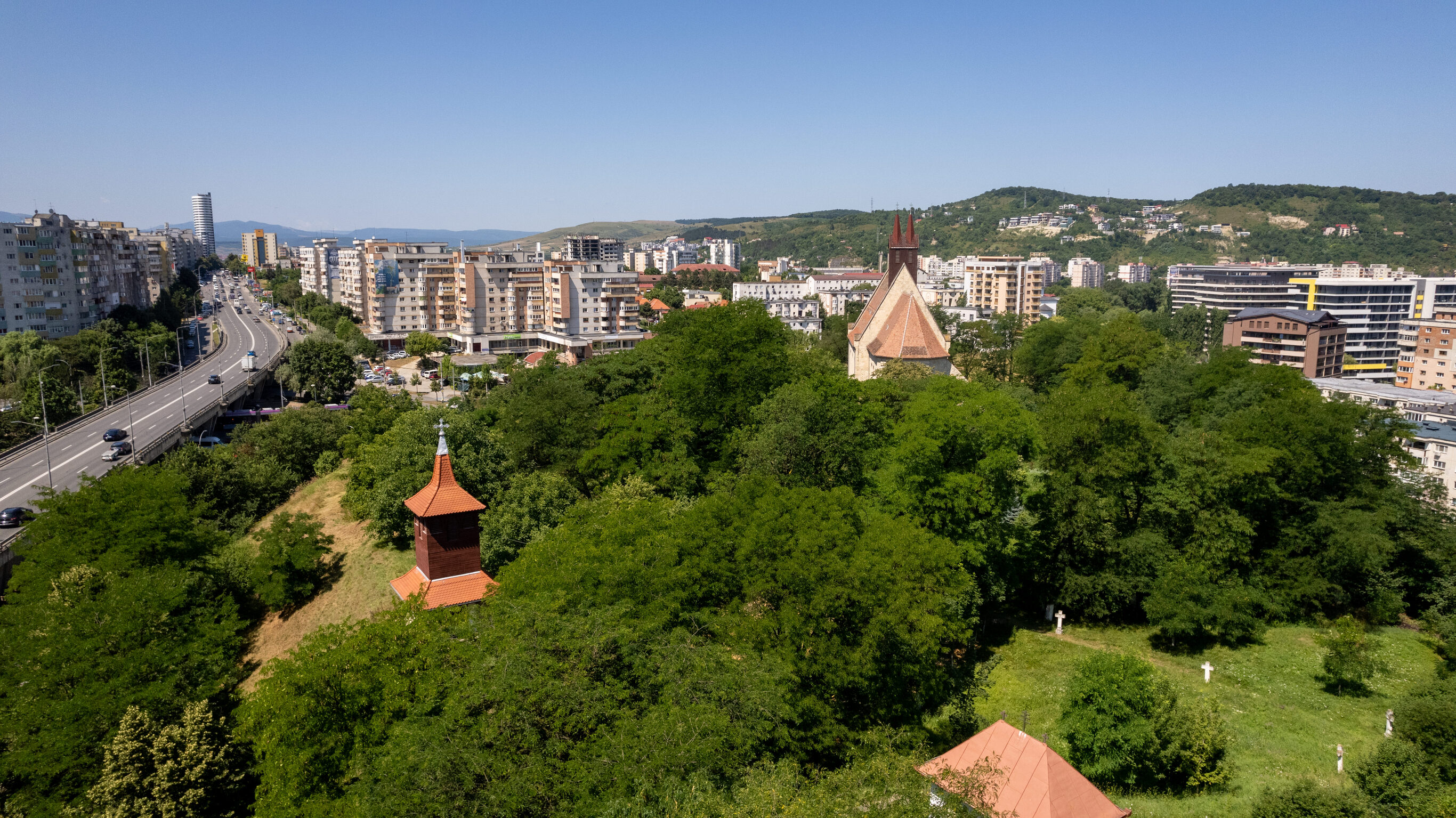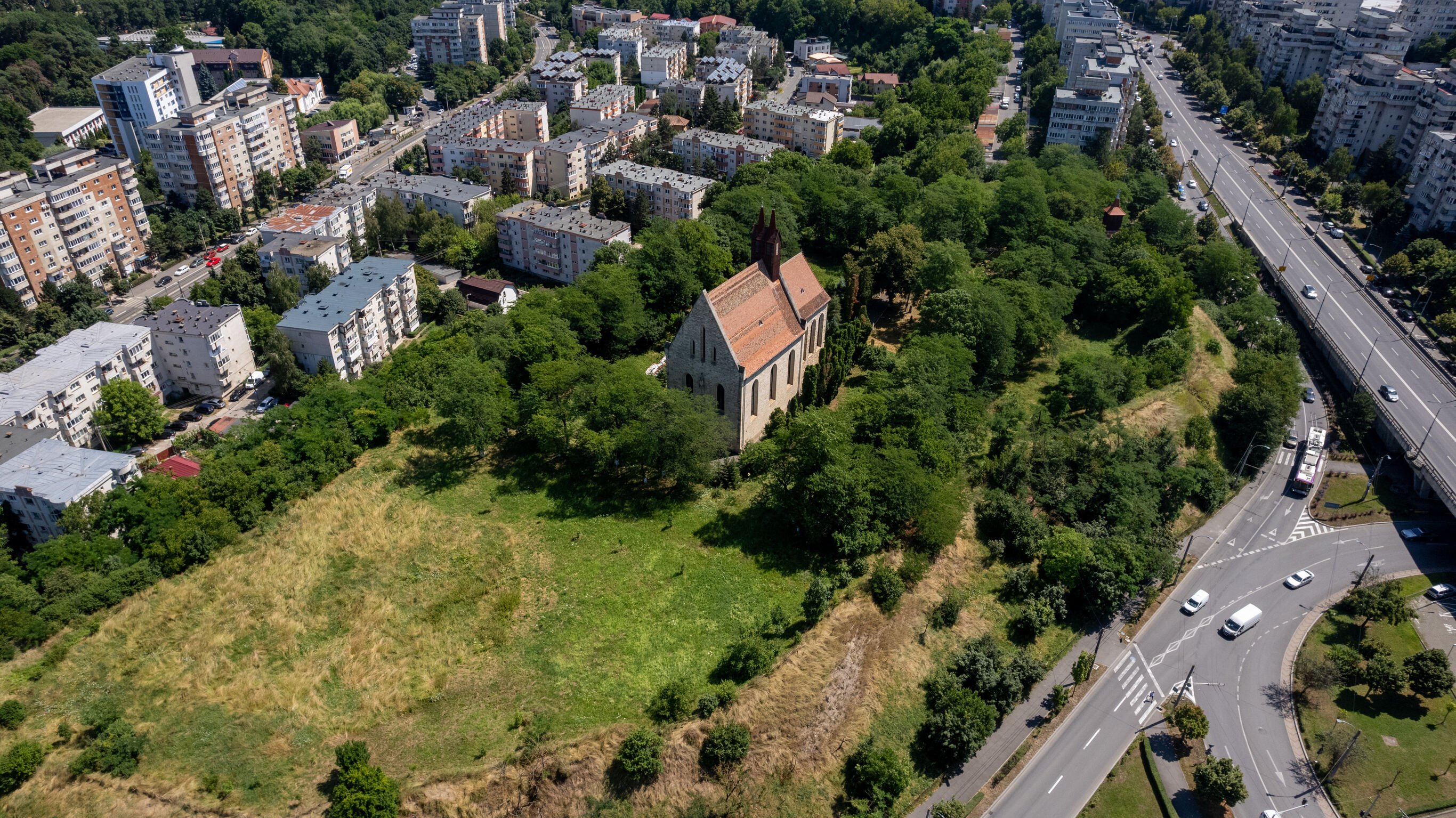Cluj Castle – The early royal castle in Cluj-Mănăștur (Calvary Hill)
Historic Monument Code: C J – I -s- B – 0 6924
In the absence of written sources, the early history of Cluj-Napoca remains unclear. However, it is certain that during the time of establishing the county system in the early Arpadian era, three important and interconnected centres were found in the region: the royal castle of Cluj (in the Mănăștur District), the suburban-type settlement that developed near the castle (around the city centre) and the salt mines at Cojocna. The castle, which served as the county seat, also protected the salt mines and the road leading to Oradea.
Although the first mention of Cluj County dates only from 1177, and the name of Cluj Castle appears only in 1213, the county seat and its early castle must have existed already in the 11th century. Its remains (the ramparts still visible today) can be identified on the Calvary Hill of Mănăștur District: adapting to the contour of the hill, the earth and timber fortification had an oval shape elongated in the east-west direction (220 x 98 metres), with the entrance probably on the south-eastern side, as it is today. The castle’s original function was completed relatively early, at the latest during the reign of King Ladislaus I (1077-1095), with that of an ecclesiastic centre, by founding a Benedictine monastery: the name of the later independent settlement of Cluj-Mănăștur originates from the monastery function, and the present Assumption of the Virgin Mary Roman Catholic Church (also known as Calvary Church) preserves elements from the late mediaeval monastery church. The abbey also functioned as a place of authentication (locus credibilis, with attributions similar to that of a notary). This
activity was attested already in the 13th century, thanks to which the monastery became one of the most important public institutions in Transylvania. By this time, however, the castle no longer functioned as county seat: it seems that for a time the two institutions coexisted here, but by the end of the 12th century the county administration left the earthen castle used only from time to time.
The fortification was still maintained for some time, until the Mongol invasion of 1241 left it in ruins. The Benedictine abbey, rebuilt several times over the centuries, remained here until the 1556 secularisation of church property. In the 16th and 18th centuries, the monastery was taken over for shorter periods by the Jesuits, however, in the 1780s its church was used as a granary and later, in the early 19th century, people treated it as a stone quarry for the town’s constructions. Only the sanctuary and sacristy (from the 15th century) have been preserved from the late mediaeval church. The nave, built between 1895 and 1896, is neo-Gothic in style.
Extra:
- In a study published in 1984, historian and archivist Zsigmond Jakó examined the documents attesting the privileges of the abbey, discovering a series of forgeries carried out in the second half of the 14th century. Its initiator was probably Abbot Otto himself (1361-1383), while the forgeries were carried out by a certain magister Stephen, who must have been well-versed in the practices of the royal chancellery. He was later condemned to be burned at the stake by Transylvanian voivode Ladislaus Losonczi on account of forging several documents and
seals. The abbot’s intricate plan regarding the forged documents was intended to settle the monastery’s disputes by providing confirmation
of its ownership of certain domains, as the original documents had been lost in its turbulent past: at the end of the 12th century, the Transylvanian bishop forcibly entered the monastery and imprisoned the abbot together with two monks, and at the beginning of the 13th century, Bishop William (1204-1221) destroyed the documents regarding the monastery’s privileges. The forgery must have come to light because, after Queen Mary ordered Abbot Otto to produce the original diplomas in 1383, the abbot disappeared from the written sources, and the monastery’s activities as a place of authentication were suspended along with the destruction of its authentic seal. Its activities were only resumed after the appointment of a new abbot in May 1384.

Photo: Szabó Tamás





